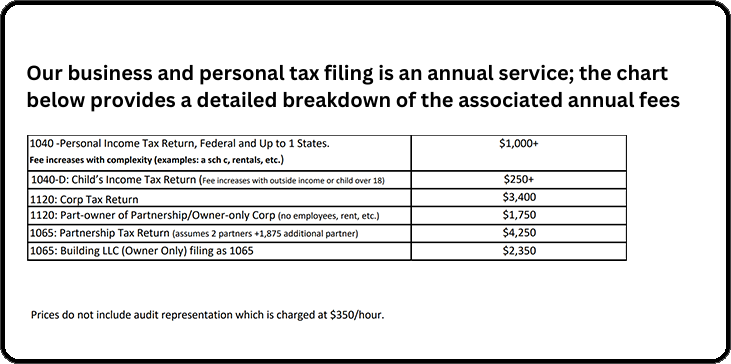Tune in to our podcast series: The Dental Board Room
Listen Now

At first glance, the idea of paying your kids nearly $16,000 a year might sound extravagant—or even crazy. But for dentists who own their practice, this is one of the smartest, IRS-approved strategies to reduce taxes, keep money in the family, and build wealth for future generations.
In fact, for 2025, the magic number is $15,750—the standard deduction amount for individual taxpayers. That means you can pay your child up to that amount, legally deduct it as a business expense, and keep more of your hard-earned dollars away from the IRS.
So, would you pay your kids $15,750 a year? Here’s why the answer should be yes—and exactly how it works.
Dentists often fall into some of the highest tax brackets in the country. Between federal and state income taxes, it’s not uncommon for a dental practice owner to be taxed at a combined rate of 37–45% on their last dollar earned.
But kids? They’re usually in the 0% bracket.
By paying your children through payroll:
It’s the perfect example of income shifting: same dollars, lower tax bill.
The IRS allows every taxpayer a standard deduction—a set amount of income that isn’t taxed. In 2025, that number is $15,750 for single filers, which includes your children.
That means if your child earns exactly $15,750, their taxable income is reduced to zero by the standard deduction. They don’t owe federal income tax, and in most cases, they don’t even need to file a federal return.
So when you pay your child $15,750:
It’s a win-win.
Let’s look at the math.
Assume you’re in a combined 39% federal and state marginal bracket.
Now, subtract payroll taxes (FICA), which run about 15% of wages:
With three children, that’s an $11,400 annual tax savings. Over 10 years, you’ve saved more than $100,000, all while funding your kids’ futures.
The IRS rule is clear: wages must be tied to legitimate work. That doesn’t mean your kids need to run the front desk—it just means they need age-appropriate tasks that benefit the business.
Some examples:
The key is to document the work—keep task lists, photos, or time sheets. If you’re ever audited, you can show your child really did contribute.
To stay compliant and protect yourself in case of an audit, follow these steps:
Remember, the IRS can’t tell you who to hire. If your child does legitimate work, you’re well within your rights to employ them.
The one unavoidable cost of this strategy is FICA taxes—Social Security and Medicare.
Here’s why it’s still worth it:
And here’s a bonus: your child starts earning Social Security credits early, which could help them later in life.
Once the wages are paid, the money doesn’t need to sit in your child’s account. In fact, many dentists simply have it direct deposited into their family’s personal checking account.
You can then use it for:
The important thing is that the money flows through payroll and is reported properly. From there, it’s still part of your family’s financial plan.
The real magic happens when you use your kids’ wages to fund Roth IRAs.
Imagine contributing $7,000 per year for 15 years (ages 10–25):
That’s generational wealth—created while reducing your own tax bill today.
Some dentists prefer to use part of their wages for 529 education plans. These accounts grow tax-free when used for qualified education expenses like tuition, books, and room and board.
A smart split could look like this:
This way, you cover both education and long-term retirement planning for your kids.
Beyond the tax savings, there’s another priceless benefit: teaching your kids financial literacy.
By paying them real wages, you can:
Instead of an allowance that disappears, they’re learning how money grows when managed wisely.
Dr. Miller, a practice owner in California, has three children ages 10, 14, and 17. In 2025, she puts all three on payroll at $15,750 each.
Here’s the outcome:
She then contributes $7,000 into a Roth IRA for each child. By the time her oldest graduates college, he has over $50,000 already invested for retirement—before his first real job.
Dentistry is a profession with high earning potential but also high taxes and significant financial stress. Strategies like this allow you to:
It’s a simple, repeatable system that pays off year after year.
Would you pay your kids $15,750 a year? If you’re a dentist who owns your practice, the answer should be a resounding yes.
This isn’t a loophole—it’s smart financial planning. By putting your kids on payroll, you reduce taxes, redirect money into your family’s future, and set your children on a path toward financial independence.
With the right guidance, this could be one of the easiest and most impactful tax strategies you’ll ever implement.
Want the full details on how to set this up the right way—without IRS headaches?
Wes knows what's best for dental practices. He's been doing this for a long time and he sees lots of practices. He can tell me how our practice is doing, and what we can do to increase our productivity. With past CPA's, there were no ideas. It was all coming from me, saying "I think I can do better, but I don't know how." I come in to meet with Wes and he says "You CAN do better, and I know how."
PracticeCFO is in hundreds of dental offices around the country. They know what numbers should look like. They know what percentages of payroll, rent and supplies should be, and they will hold you accountable to those numbers, which will really help you stick to your plan and your path of growth and savings. That is invaluable
Whenever something comes up, whether it's building or practice related and we weren't sure where the numbers would go, PracticeCFO has been instrumental in helping us figure that out. I can't say enough of how important that is - that it goes beyond that initial partnership. They make sure this business marriage works.
When I go home from work, I don't spend a whole lot of time stressing about what my books look like, or how much I owe in taxes. By using PracticeCFO, the burden of keeping track of a lot of the big financial numbers and metrics are taken off my plate.
PracticeCFO helped me develop a plan for the future. I have colleagues that work with other accountants that don't have a plan - they just look at the numbers of the practice and that's it. There's no plan for 10, 20 years from now. But with PracticeCFO, you get that. PracticeCFO makes you feel like you're they're only client.
(In reference to his practice sale) What could've been super stressful, wasn't! When picking John and Wes, it was from word of mouth recommendations and other people's experiences from the past that really did it for me. And it turns out that those recommendations were right on the line.
Wes knows the business side of dentistry. His comprehensive plan will organize your personal and professional finances so you can focus on taking care of patients. Massive ROI.
I can’t say enough good things about everyone at PracticeCFO. Everyone on the team is professional, organized, knowledgeable, helpful and kind. They also respond to emails and phone calls immediately and are always happy to help. They have helped me navigate year-to-year as a business owner. PracticeCFO gives me peace of mind that my business is in good hands.
I love Practice CFO! They have helped me obtain a practice and maintain a practice. They are incredible people who are on top of everything and make owning and running the business portion of a practice easy. They couldn’t be better for my business and my sanity. They have every detail of the business and taxes taken care of where all I have to do is show up and follow their easy steps to success!
Practice CFO has the best tools I’ve seen for personal tax and financial planning in addition to top-tier corporate tax and accounting services. I have been very pleased with the level of quality service. They manage my monthly bookkeeping and accounts payable. It is a great system and saves me a ton of time, and it allows us to have monthly financial statements within a week of month end.

This will close in 0 seconds